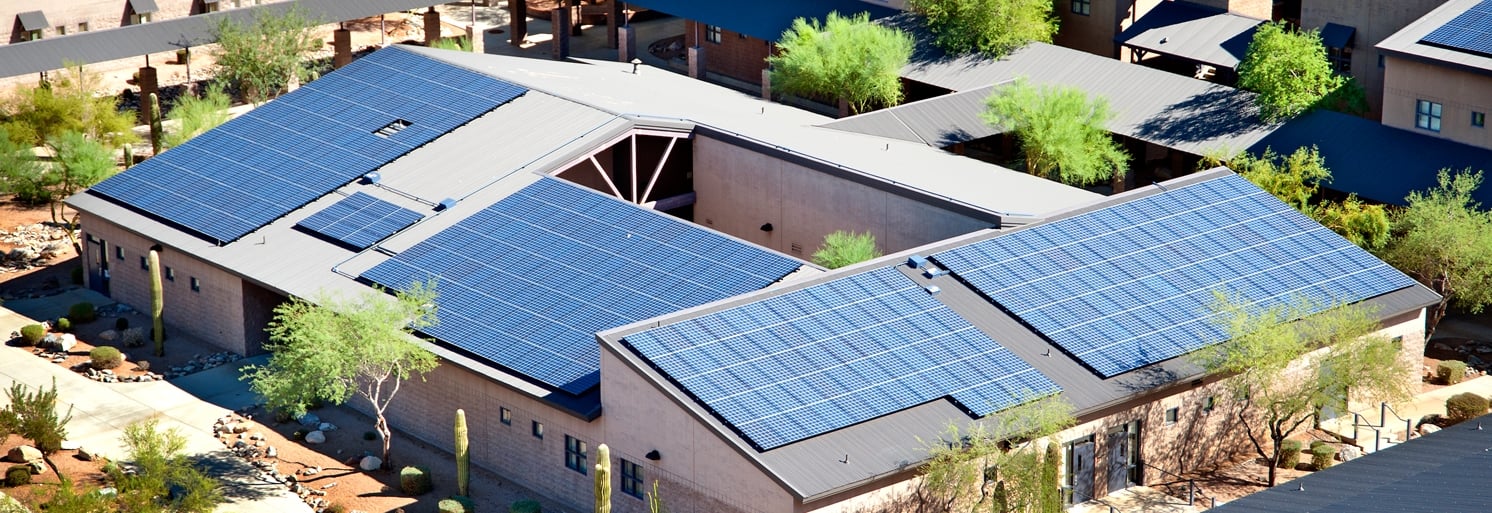
This week we saw two AEE member companies partnering in a bold new venture, an examination of combined heat and power technology for hospitals, plus salt-cooled nuclear reactors and 100 percent renewable energy for a Central American country and a small town in Texas.
Two AEE Leadership Council members, EnerNOC and SunPower, announced a joint venture to provide energy management software and solar power to large-scale commercial and industrial customers. Essentially, the two companies will trade products for existing customers: EnerNOC’s customers will be offered SunPower’s solar services, and SunPower’s customers will receive EnerNOC’s energy management software-as-a-service.
“Our two companies will work together to continuously evolve these services and offer customers best-in-class solar technology coupled with industry-leading energy intelligence and management,” said Tom Werner, SunPower’s president and CEO.
Currently, only a small portion of EnerNOC’s consumer base incorporates solar into their energy mix. By introducing EnerNOC’s technology as an option to existing SunPower customers, EnerNOC is on track to expand that solar base. SunPower’s existing client base will mean thousands of new solar customers for EnerNOC’s software – “tens of thousands if we’re successful,” says EnerNOC CEO Tim Healy, a member of the AEE board of directors.
SunPower’s client base, likewise, receive EnerNOC’s “basic service with enhanced capabilities,” well suited for large-scale commercial solar customers. The software will enable energy managers to drill down into energy production and energy consumption by building.
Midwest Energy News ran a feature this week focusing on a Wisconsin hospital that runs on combined heat and power. A few months ago, Gundersen Health System’s campus became the first “energy independent” hospital in the country, thanks in large part to two combined heat and power (CHP) projects. CHP, also called cogeneration, generates both electricity and useful heat from the same fuel source, achieving high levels of efficiency as well as protection against power outages on the grid. (Learn more in our Advanced Energy Technology of the Week profile of CHP.)
Gundersen’s projects use two different sources to produce energy, both of them renewable. The first project, launched in 2012, uses methane gas from a nearby landfill to power a turbine. The 2012 project produces enough electricity to power the hospital, and captures the heat produced by electricity generation to heat the facility. The second project, begun in 2013, uses biomass (in this case, wood waste from six nearby lumber mills) to produce steam that heats and humidifies the building in the winter and sterilizes hospital equipment year-round. The system also generates so much electricity that Gundersen is selling it back to the utility.
In global advanced energy news, the Oak Ridge National Laboratory is partnering with the Shanghai Institute of Applied Physics to work on salt-cooled nuclear reactor technologies, and in France, a new law declares all new rooftop construction must include solar panels. The country of Costa Rica just went 75 days without using any fossil fuel-generated electricity.
A small town in Texas is planning to do more or less the same thing, based mainly on price. The town of Georgetown’s municipal utility, Georgetown Utility Systems, has made deals with EDF Renewable Energy to provide wind power and SunEdison, an AEE member company, for solar. Slate reports the city’s stated reasoning: “The new renewable power contracts signed by Georgetown provide electricity at a lower overall cost than its previous wholesale power contracts.”
E&E’s coverage of Georgetown going 100 percent renewable because it’s such a good deal, which is also posted on Scientific American, cites our Advanced Energy Now 2015 Market Report on solar revenue growth. That story also quotes AEE Senior VP Malcolm Woolf, noting that municipalities can get renewable energy for their customers two different ways, by building their own renewable energy assets or entering into power purchase agreements with developers: “Either way, you’re getting the same electrons, at the same price.”
From Texas to Costa Rica and beyond, the advanced energy market is growing. Get a sense of just how big and how fast in AEE’s new 2015 Market Report, now available.
